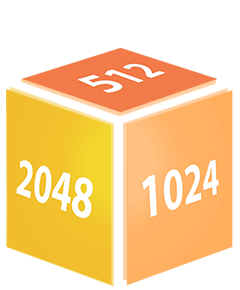2048 Live
A multiplayer version of 2048, inspired by Twitch Plays Pokemon.
View demo »
Table of Contents
About The Project
This project is an variant of the 2048 game which introduces a multiplayer feature, in which players move blocks on the board via chat messages.
It served as a self-development tool to learn how to implement web sockets on back-end.
Built With
How To Play
The rules are almost identical to the original 2048 game, create a 2048 block in order to win the game. The game starts by default with one obstacle, a randomly placed block which acts as a wall. Players can modify how many obstacles are on the board in the settings.
To move the blocks, send movement commands: 'left', 'right', 'bottom' or 'top' -- In lower case format
To facilitate testing and debugging, arrow keys and touch gestures inside the grid are available.
Getting Started
To get a local copy up and running follow these simple steps.
Prerequisites
- Composer
- Laravel 6+
- Node.js
- A MySQL database
- Pusher - free version is ok
- Optional - Sentry
Installation
- Clone the repository
git clone https://github.com/cristidrg/2048.git-
Create a .env file from the .env.example template and fill in the blanks
-
Install Laravel Dependencies
composer install- Install NPM dependencies
npm install- Create Database Schema
php artisan migrate- Populate Database with sample data
php artisan db:seed- Serve the project locally
php artisan serveDevelopment Notes And Challenges
Database Design
- The first step I took was to create the shape of the database, which looks like so:
- Game has:
- obstacleCount (int)
- Blocks (one-to-many)
- row (int)
- column (int)
- value (int)
- Messages
This database schema fulfills all the needs for a single game session. Figuring out if a game is done can be checked via the blocks values.
If we would want to have multiple game rooms at the same time which also support turn-based turns, we could use the following structure:
- GameRoom has:
- democracyActive (bool)
- ActiveUserId (string)
- Game (one-to-one)
- obstacleCount (int)
- Blocks (one-to-many)
- row (int)
- column (int)
- value (int)
- Messages (one-to-many)
- ListOfUsers (one-to-many)
Back-end Design
Laravel is a MVC framework. In the game I used a single controller for both messages and the game actions to get it done faster. All of the game logic is done on the back-end, while the front-end only displays the data its being given and sends commands to the back-end to generate a new state.
The merging algorithm can be found in the GridHelper class. I went and implemented a brute-force to cut down development time. Besides sliding and merging, there were 2 important constraints to keep in mind:
- Obstacles should be ignored
- A block can only merge once during a move
The biggest challenge I had to face was to implement the multiplayer aspect. It had to listen to events made by other players, thus using web sockets was mandatory. I haven't implemented web sockets before, but I watched some tutorials and then I got the job done using Laravel Events and Pusher.io. There are two public channels used:
- BroadcastMessageCreation - for messages
- GameUpdated - for game state
The API routes are:
+--------+---------------+----------------------------+------+----------------------------------------------------------+--------------+
| Domain | Method | URI | Name | Action | Middleware |
+--------+---------------+----------------------------+------+----------------------------------------------------------+--------------+
| | GET|HEAD | / | | Closure | web |
| | GET|HEAD | api/game/{id} | | Closure | web |
| | POST | api/game/{id}/commands | | App\Http\Controllers\GameController@handleCommand | web |
| | POST | api/game/{id}/message | | App\Http\Controllers\GameController@receiveMessage | web |
| | POST | api/game/{id}/setObstacles | | App\Http\Controllers\GameController@setObstacles | web |
+--------+---------------+----------------------------+------+----------------------------------------------------------+--------------+
The /commands route accepts the playing commands "left","right","top","bottom" as well as "restart".
Front-end Design
The front-end was built using Vue.js to ease data manipulation. The game grid is built using div elements positioned absolutely inside the grid container. Anime.js was leveraged to create smooth animations.
Theming is done via TailWind CSS.
Contact
Cristian Dragomir - @linkedin - cristiandrg96@gmail.com

